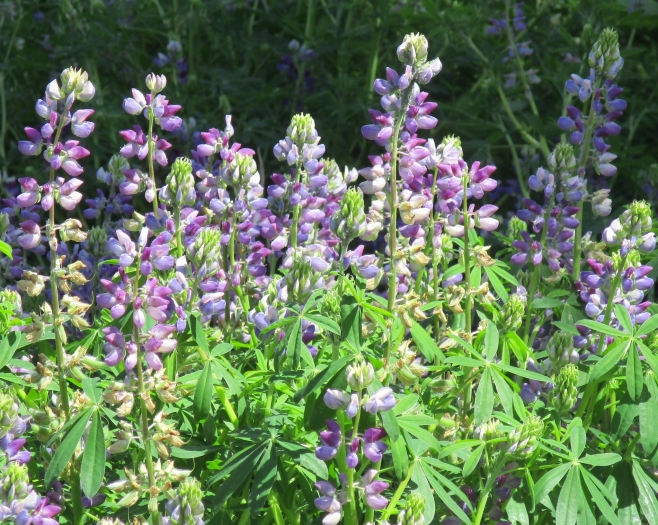Broadleaf Lupine
(Lupinus latifolius)
Broadleaf Lupine (Lupinus latifolius)
/
/

sprcrkwild
CC BY 4.0
Image By:
sprcrkwild
Recorded By:
Copyright:
CC BY 4.0
Copyright Notice:
Photo by: sprcrkwild | License Type: CC BY 4.0 | License URL: http://creativecommons.org/licenses/by/4.0/ | Rights Holder: sprcrkwild | Publisher: iNaturalist | Date Created: 2021-05-19T01:40:17-07:00 |


























































Estimated Native Range
Summary
Lupinus latifolius, commonly known as Broadleaf Lupine, is a perennial herb that thrives in a variety of western North American habitats, including open woodlands, forest edges, meadows, and montane regions from British Columbia to Baja California and east to New Mexico. It typically grows from 30 centimeters to over two meters in height and has a hairy to nearly hairless texture. The plant features an inflorescence with many flowers, which may be arranged in whorls. Each flower measures one to two centimeters in length and can be purple, blue, or white, with a spot on its banner that is yellowish, pinkish, or white. Broadleaf Lupine blooms from late spring to midsummer, and its flowers are known for their showiness, attracting pollinators such as bees and butterflies.
Broadleaf Lupine is valued for its ornamental flowers and ability to adapt to various soil conditions, making it a popular choice for native plant gardens, restoration projects, and as a border plant in cultivated landscapes. It is drought-tolerant once established and prefers full sun but can tolerate partial shade. While it generally requires high amounts of water during its growing season, it is relatively low-maintenance once established. This lupine species can enrich soil by fixing nitrogen, which benefits other plants in the vicinity. However, gardeners should be aware that Lupinus species can be toxic to livestock and pets if ingested. It is also susceptible to fungal diseases, such as powdery mildew, in humid conditions.CC BY-SA 4.0
Broadleaf Lupine is valued for its ornamental flowers and ability to adapt to various soil conditions, making it a popular choice for native plant gardens, restoration projects, and as a border plant in cultivated landscapes. It is drought-tolerant once established and prefers full sun but can tolerate partial shade. While it generally requires high amounts of water during its growing season, it is relatively low-maintenance once established. This lupine species can enrich soil by fixing nitrogen, which benefits other plants in the vicinity. However, gardeners should be aware that Lupinus species can be toxic to livestock and pets if ingested. It is also susceptible to fungal diseases, such as powdery mildew, in humid conditions.CC BY-SA 4.0
Plant Description
- Plant Type: Herb
- Height: 3-4 feet
- Width: 1-2 feet
- Growth Rate: Rapid
- Flower Color: Blue, Purple, White
- Flowering Season: Spring
- Leaf Retention: Deciduous
Growth Requirements
- Sun: Full Sun, Part Shade
- Water: Medium
- Drainage: Medium, Fast
Common Uses
Bee Garden, Bird Garden, Butterfly Garden, Deer Resistant, Drought Tolerant, Fragrant, Groundcover, Hummingbird Garden, Low Maintenance, Rabbit Resistant, Rock Garden, Showy Flowers
Natural Habitat
Native to open woodlands, forest edges, meadows, and montane regions
Other Names
Common Names: Broad-Leaved Lupine, Lupin À Folioles Larges, Broad-Leaf Lupine
Scientific Names: , Lupinus latifolius, Lupinus rivularis var. latifolius, Lupinus perennis subsp. latifolius, Lupinus lasiotropis, Lupinus caudiciferus, Lupinus perennis var. latifolius, Lupinus pennellianus,
GBIF Accepted Name: Lupinus latifolius Lindl. ex J.Agardh